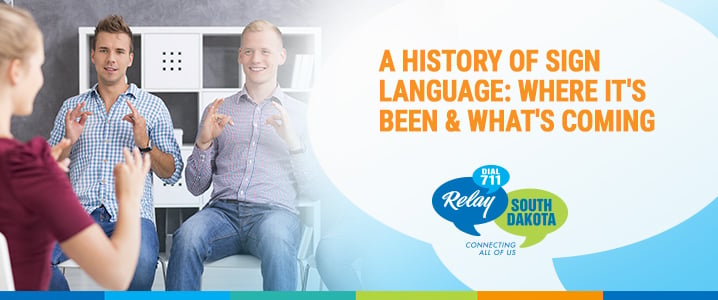
A History of Sign Language: Where It’s Been and What’s Coming

Many deaf or hard-of-hearing individuals primarily communicate through sign language. Sign language uses gestures, hand signs and fingerspelling instead of spoken words. Signs can represent single words or entire phrases. Like spoken languages, sign languages also contain grammatical rules, expressions, regional accents and dialects.
But how did it all begin? Let’s take a closer look.
The Differences Between Sign Languages
First things first—it’s important to know that, though people commonly assume there is one universal sign language, many countries have their own unique versions. For example, the British use British Sign Language (BSL), the French use French Sign Language (LSF) and so on. It’s also incorrect to assume the sign languages mirror the respective spoken language. American Sign Language (ASL) is completely distinct from spoken English.
For a rundown of how the ASL alphabet looks, check out StartASL’s guide.
Language Roots & Schools for the Deaf
The exact beginnings of ASL or sign language in general aren’t precisely known, but it’s suggested that ASL dates back hundreds of years, into the 17th Century. Like the English language, ASL grew out of a mix of different sign languages, such as FSL and other local versions.
Most sign languages developed independently of each other. No one has identified a particular sign that kicked everything off. In France, the first sign languages developed during the 18th Century. In fact, a French citizen, Abbé Charles Michel de l’Épée is commonly regarded as the first teacher of the deaf and became known as the “Father of the Deaf.” He started a free school for the deaf in Paris in 1760, and it’s known today as the Institut National de Jeunes Sourds de Paris (INJS), or the National Institute for Deaf Youths.
Meanwhile in 1817, Thomas Hopkins Gallaudet, a Yale graduate and ordained clergyman, met Dr. Mason Cogswell and his deaf daughter, Alice. They embarked on a voyage to Europe to learn the art of educating deaf children. Gallaudet went on to enlist the help of Laurent Clerc, a talented deaf teacher, to establish the first permanent school for the deaf in the United States. Today it’s known as the American School for the Deaf. Gallaudet’s son went on to help establish Gallaudet University in Washington, D.C.
Sign Language Today
While some opposed the use of sign languages in schools during the early 20th Century, ASL continued to thrive due to its usefulness among deaf and hard-of-hearing people. In the early 1960s, a hearing linguist and professor at Gallaudet University started thoroughly studying sign language and contributed to modern ASL research and its reemergence in classrooms.
Thanks to advancement in video technology and internet speed, sign language can now be spoken over phone calls using relay services and other video conferencing technology.
Now, smartphones, mobile apps and voice recognition make bridging communication barriers easier than ever.
Sources: NIDCD, Vassar, PBS, Gallaudet
Found in: Community


